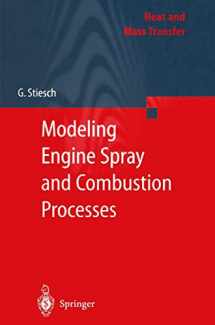
Modeling Engine Spray and Combustion Processes (Heat and Mass Transfer)
Book details
Summary
Description
The utilization of mathematical models to numerically describe the performance of internal combustion engines is of great significance in the development of new and improved engines. Today, such simulation models can already be viewed as standard tools, and their importance is likely to increase further as available com puter power is expected to increase and the predictive quality of the models is constantly enhanced. This book describes and discusses the most widely used mathematical models for in-cylinder spray and combustion processes, which are the most important subprocesses affecting engine fuel consumption and pollutant emissions. The relevant thermodynamic, fluid dynamic and chemical principles are summarized, and then the application of these principles to the in-cylinder processes is ex plained. Different modeling approaches for the each subprocesses are compared and discussed with respect to the governing model assumptions and simplifica tions. Conclusions are drawn as to which model approach is appropriate for a specific type of problem in the development process of an engine. Hence, this book may serve both as a graduate level textbook for combustion engineering stu dents and as a reference for professionals employed in the field of combustion en gine modeling. The research necessary for this book was carried out during my employment as a postdoctoral scientist at the Institute of Technical Combustion (ITV) at the Uni versity of Hannover, Germany and at the Engine Research Center (ERC) at the University of Wisconsin-Madison, USA.


We would LOVE it if you could help us and other readers by reviewing the book
Book review



